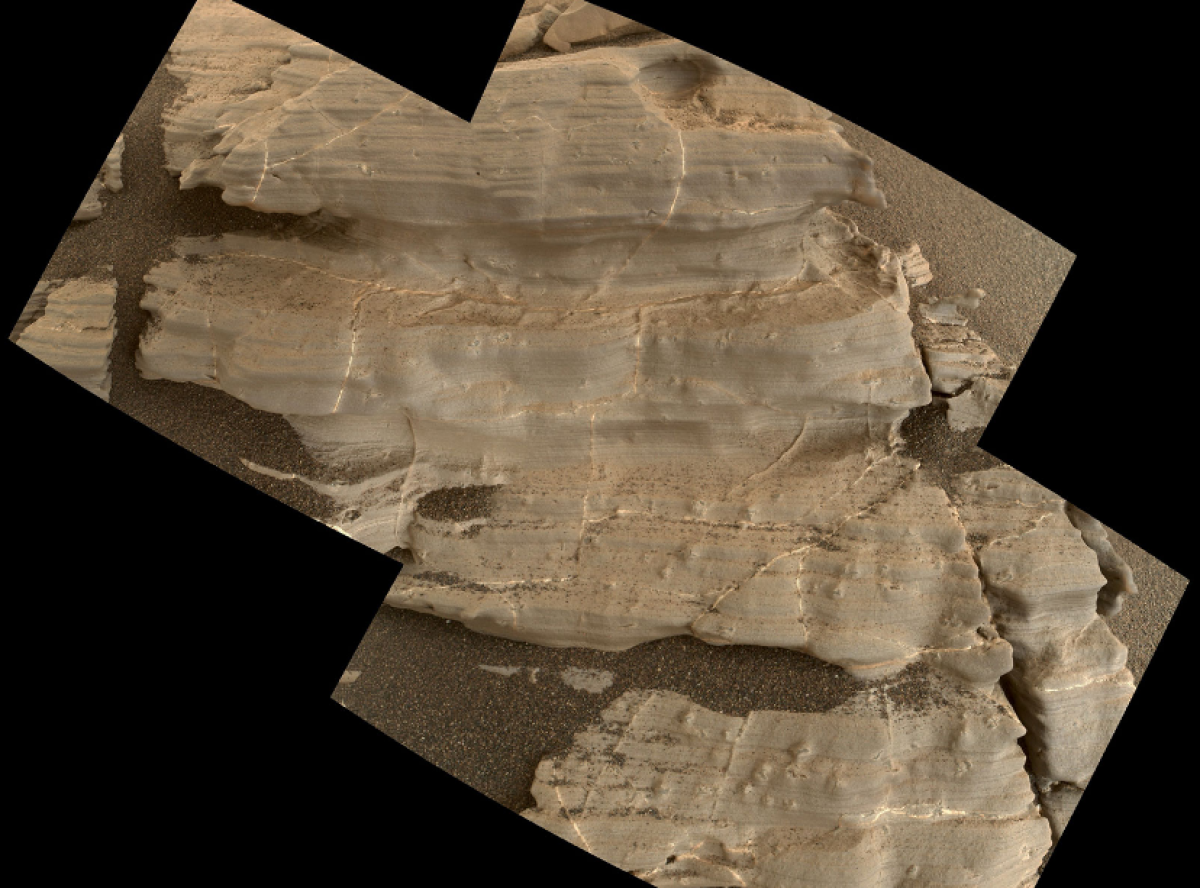Last month, an exploratory rover on Mars sent photos back to Earth of strange rock indentations on the Red Planet. NASA said the markings were evidence of ancient water crystals. One scientist, however, believes the formations are proof of ancient alien life in the form of fossilized impressions or drag marks.
In August 2012, Curiosity, a car-sized space exploration vehicle, landed on the surface of Mars. The rover's mission was to take photographs of the Martian surface and send them back to Earth for further analysis. Earlier this year, NASA received images from Curiosity of strange rock formations from an area of Mars called the Vera Rubin Ridge. The photographs showed small indentations on the rock that look similar to ancient crystals found on Earth.
Related: NASA Photos: Seashells, Sphinx Or Alien Life? Here's Why If You Stare Long Enough You See Objects On Mars

"These shapes are characteristic of gypsum crystals," said Sanjeev Gupta, a Curiosity science-team member at Imperial College, London, according to NASA. "These can form when salts become concentrated in water, such as in an evaporating lake."
Barry E. DiGregorio, an honorary research fellow at the Buckingham Center for Astrobiology at the University of Buckingham, disagrees with that assessment. In an email to Newsweek, the veteran astrobiologist explained how the indentations may instead be evidence of ancient marine activity on Mars, dating to a time when the planet had several lakes billions of years ago. Together with two other colleagues, DiGregorio is preparing a scientific paper on the subject.

The Vera Rubin Ridge, located on Mount Sharp, stands out as an "erosion-resistant band," according to NASA. The marks in the photos are tiny, about the size of a sesame seed. According to Curiosity Project scientist Ashwin Vasavada, the tiny dents are unique and may be evidence of saltwater on the Red Planet, whereas most past evidence of water on Mars suggested that it was relatively fresh, nonsalty water.
Related: Search For Life Focuses On Mars, Moons Of Jupiter And Saturn-And Earth
"In either scenario, these crystals are a new type of evidence that builds the story of persistent water and a long-lived habitable environment on Mars," Vasavada said.
DiGregorio says it's unlikely that the formations are water crystals. The markings, he says, look more like ancient marine trace fossil activity on Earth, such as ancient footprints or drag marks, than they do crystals. DiGregorio plans to reveal further supporting evidence for this hypothesis in a report to be published within the next two months.
Uncommon Knowledge
Newsweek is committed to challenging conventional wisdom and finding connections in the search for common ground.
Newsweek is committed to challenging conventional wisdom and finding connections in the search for common ground.
About the writer
To read how Newsweek uses AI as a newsroom tool, Click here.








